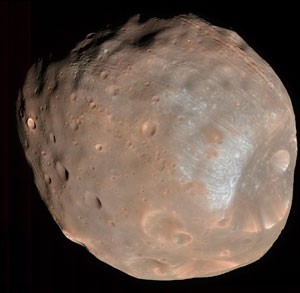Science and Technology
After months of planning, the UA-run HiRISE camera on NASA’s Mars Reconnaissance Orbiter recently took the most detailed photographs yet of one of Mars’ two small moons, providing physical features that may illuminate its origins.
On March 23, the camera took two pictures of Phobos 10 minutes apart, the largest and innermost of Mars’ moons. Deimos is the other.
The camera launched with the orbiter in August 2005 and reached Mars’ orbit in March 2006.
Normally, the camera takes only around 12 or more pictures of Mars a day, so for the camera to aim at Phobos was a non-standard procedure and took several months of planning, said Alfred McEwen, principal investigator of HiRISE.
The camera specializes in getting high-resolution color pictures, he said, and the results provided a level of detail unparalleled with the misshapen moon, known as one of the darkest, light-resistant bodies in the universe.
The images revealed a 9-kilometer crater, called Stickney, whose features “”might tell us about the origin of Phobos,”” McEwen said.
Also, despite the moon’s low gravity, it appears that there are landslides within Stickney, he said.
“”The craters in the pictures might tell us about the origin of Phobos,”” McEwen said.
This is because scientists can determine the age of the surface of the moon by looking at craters, he said.
The images also showed blue-white coloring, another indicator of aging, said Nathan Bridges, an investigation scientist at NASA’s Jet Propulsion Lab.
“”The material with the bluish coloring is new material,”” he said. “”The material on the moon gets redder over time.””
The HiRISE camera is so sensitive that it was able to reveal a side of Phobos only illuminated by the light of Mars, called Marsshine, which is darker and hard to see. The rest of the moon is lit directly by the light of the sun.
“”The pictures are also helpful to Russian scientists, who will be launching a mission to Phobos next year and will be studying our images,”” Bridges said.
The HiRISE camera is run by the UA’s Lunar and Planetary Laboratory, while the orbiter itself is run by the Jet Propulsion Lab, based in Pasadena, Calif.
The UA “”plans, builds and processes the data”” for the camera, McEwen said.









